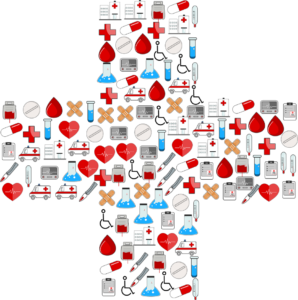How Nurses Make an Impact at Every Level of Patient Care

During the month of May, the healthcare profession recognizes the vital role played by nurses across the country. Over the years, the profession has developed. Nurses play a key ‘patient facing’ role in almost every department in a hospital.
According to the American Nurses Association, there are approximately three million nurses currently in the United States. In order to continue to meet healthcare needs, the country will need over one million new registered nurses by 2022.
One of the many problems for the healthcare industry is the shortage of qualified nurses. This is not because there is a shortage of graduates, but because of limited clinical space at nursing schools. Classes tend to be large and working nurses are less attracted to becoming educators because of a lower salary.
Despite these obstacles, nursing schools are readily implementing solutions. Some are expanding their program to new campuses. Others are seeking to form new partnerships with hospitals to allow experienced staff nurses to teach.
Colleges such as the Anne Arundel Community College in Arnold, Maryland are offering an accelerated associate nursing program. This program enables “paramedics or veterans to be admitted straight into the second year of the two year program”.
The Staff Nurse of the Future
 Over 5 years ago, the Massachusetts General Hospital implemented an innovative program which they continue to benefit from today. This program is led by Dr. Ives Erickson, Senior VP for patient care and Chief Nurse at MGH.
Over 5 years ago, the Massachusetts General Hospital implemented an innovative program which they continue to benefit from today. This program is led by Dr. Ives Erickson, Senior VP for patient care and Chief Nurse at MGH.
In the pilot, twelve Innovation units were designated. These innovation units promote a relationship based care approach. Their purpose is to test and evaluate 13 evidence-based interventions. A new staff nurse role called the ARN (the Attending Nurse) was introduced which proved to be integral to this initiatives success.
The ARN is a multi-faceted role, including playing the roles of patient navigator, advocator, educator and discharge nurse. The most crucial part of the role is that the ARN, provides… “Patients and (their) families’ (with) a consistent presence throughout their hospitalization and after discharge”.
The results of the program were almost immediate. “More than 95% of patients surveyed felt included as part of the care team, a stated goal of the Innovation Unit”…patients also reported that calls were answered promptly 88% of the time. By the end of the program’s initial year, “MGH found that units using ARNs saw a 5% decrease in length of stay and a 3% drop in readmissions in the first year”. Patient satisfaction scores for the Innovation Units doubled in comparison to the rest of the hospitals.
The changing role of the Nurse Executive and its influential impact
 Among the challenges facing hospitals is to evolve and stay ahead of the wave of industry change. This calls for a leader who is able to facilitate the collaboration of different multi- service line leaders and their staff. The CNO oversees and is in touch with what is happening on ground level to the top of the leadership ladder.
Among the challenges facing hospitals is to evolve and stay ahead of the wave of industry change. This calls for a leader who is able to facilitate the collaboration of different multi- service line leaders and their staff. The CNO oversees and is in touch with what is happening on ground level to the top of the leadership ladder.
Bonnie Clipper, RN, Chief Clinical Officer of Cornerstone Hospital of Austin in Texas, and a Robert Wood Johnson Foundation executive nurse fellow, highlights five essential skills for nurse leaders:
- Influencing innovation
- Boundary spanning
- Collaboration
- Expanding the accessibility and use of technology
- The most crucial and fundamental characteristic is the attribute of courage.
Bonnie Clipper recommends that nursing executives “build a culture of innovation within their organizations, piloting new ideas and educating their staff, physicians and patients on what [innovation] means.” It is now much more common to see nursing supervisors equipped with wireless tablets. This enables them to interact with staff on the floor with direct access to information. This also enables them to monitor patient census and accomplish their daily routines.
Influencing a culture of innovation is directly related to the leadership competency of courage. Clipper says Hospital leadership “…needs to take more calculated risks”. One of the reasons for the failure of new innovation is because of a zero tolerance for failure. Clipper says Nursing leaders need to have more of an open mind “to pilot new ideas, iterate and pilot again”.
In conclusion, the industry is changing and it is crucial to the future of the healthcare industry that new and qualified nursing talent is brought on board. New innovation and the courage to take the brave steps of change is also crucial. Hospitals and health systems need to follow the example of the Massachusetts General Hospital implementing new programs and creating new opportunities for nursing leadership. At C-Level, executive nursing leaders need to continue influencing innovation, broadening their boundaries and promoting team work and collaboration.
To stay up-to-date with the latest trends and innovation in healthcare, be sure to follow Merraine Groups blog. https://www.merraine.com/blog/
By: Jonathan Gordon
